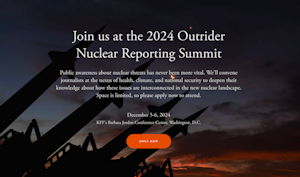Green New Deal Proposes Sweeping Economic Transformation

Our latest Issue Backgrounder looks at the potentially historic impact of the ambitious climate action agenda known as the Green New Deal — not just on this Congress or the next, or even on the race for the White House in 2020, but for the soul of the Democratic Party. An analysis of a public policy program in the making, the political maneuvering it’s engendering and its prospects to sow division or prompt a united front.



















 Advertisement
Advertisement 



